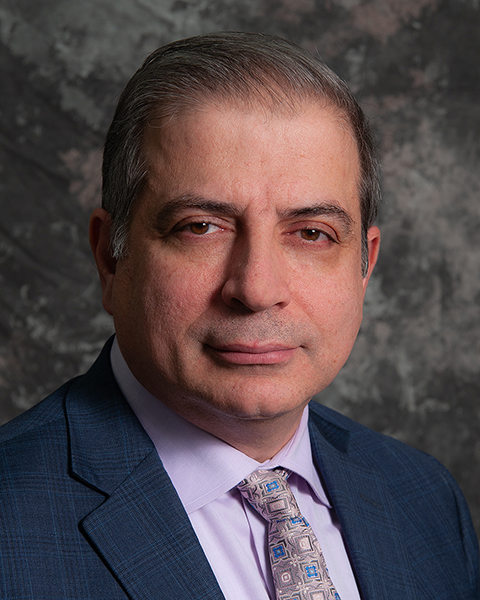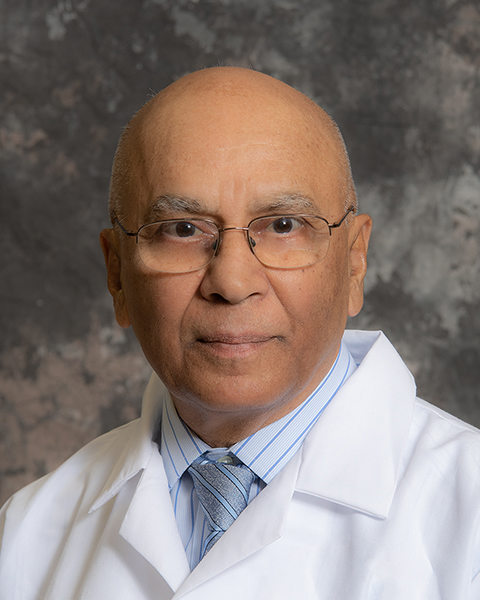
Does Penn Highlands Offer Hand Surgery?
Hand Surgery
Yes, Penn Highlands Healthcare offers numerous types of treatments and surgeries to help with a variety of hand-related injuries and ailments. Often, hand injuries can be treated with physical therapy but in the event that surgery is required, Penn Highlands uses a multidisciplinary approach, combining orthopedic surgery, plastic surgery and neurosurgery to provide patients with optimal treatment options for their situation.
When should you seek treatment for hand injuries or ailments?
Hand injuries and ailments can be the result of many factors. From simple strain and overuse to more complex injuries or traumas, it is important to seek the advice of a medical professional to properly diagnose symptoms and identify the causes of discomfort or pain. Hand injuries and ailments can worsen over time without proper treatment, so contacting a medical professional early is an important step on the road to recovery.

Neurosurgery
Penn Highlands Neurosurgery - Monongahela
Penn Highlands Neurosurgery - Greensburg
Penn Highlands Neurosurgery - Chess Street
Penn Highlands Neurosurgery - DuBois
A Service of Penn Highlands DuBois

Neurosurgery
Penn Highlands Neurosurgery - DuBois
A Service of Penn Highlands DuBois

Neurosurgery
Penn Highlands Neurosurgery - Greensburg
Penn Highlands Neurosurgery - DuBois
A Service of Penn Highlands DuBois
Penn Highlands Neurosurgery - Chess Street
Penn Highlands Neurosurgery - Monongahela

Orthopedic Surgery
University Orthopedics Center And Spine Institute - State College

Orthopedic Surgery
University Orthopedics Center And Spine Institute - State College
University Orthopedics Center - Huntingdon

Neurosurgery
Penn Highlands Neurology - DuBois
A Service of Penn Highlands DuBois

Orthopedic Surgery
Penn Highlands Orthopedics and Sports Medicine - DuBois COE
A Service of Penn Highlands DuBois
Penn Highlands Orthopedics and Sports Medicine - St. Marys
A Service of Penn Highlands DuBois

Reconstructive Plastic Surgery
Penn Highlands Plastic, Reconstructive and Cosmetic Surgery - State College
Penn Highlands Plastic, Reconstructive and Cosmetic Surgery - DuBois
A Service of Penn Highlands DuBois
Penn Highlands Plastic, Reconstructive, and Cosmetic Surgery - St. Marys
A Service of Penn Highlands DuBois
What types of hand injuries do our surgeons treat?
Arthritis of the Thumb: Arthritis is a condition that irritates or destroys a joint. Although there are several types of arthritis, the one that most often affects the joint at the base of the thumb (the basal joint) is osteoarthritis (degenerative or “wear-and-tear” arthritis). Arthritis of the base of the thumb is more common in women than in men and usually occurs after age 40. Prior fractures or other injuries to the joint may increase the likelihood of developing this condition.
Boutonnière Deformity: If you jam your finger while playing volleyball or basketball, you might notice it takes on an odd appearance. The middle joint bends down and the fingertip end joint bends back. This is a characteristic shape of boutonnière deformity, an injury to the tendons that straighten the finger. About one-third of all people with rheumatoid arthritis also have fingers with boutonnière deformities.
Carpal Tunnel Syndrome: Do you often feel a numbness or tingling in your hand, especially at night? Maybe you experience clumsiness in handling objects and sometimes you feel pain that goes up the arm to as high as the shoulder. These may be the symptoms of carpal tunnel syndrome.
Cortisone Injections: If resting, wearing splints or taking oral medication doesn’t relieve your pain, your doctor may suggest a cortisone injection. A cortisone injection can relieve pain or inflammation due to various conditions resulting from arthritis or sports-related injuries. Cortisone often provides lasting pain relief that can help you get out and enjoy life again.
De Quervain’s Tendinitis: De Quervain’s tendinitis is a condition brought on by irritation or swelling of the tendons found along the thumb side of the wrist. The irritation causes the compartment (lining) around the tendon to swell, changing the shape of the compartment; this makes it difficult for the tendons to move as they should. The swelling can cause pain and tenderness along the thumb side of the wrist, usually noticed when forming a fist, grasping or gripping things, or turning the wrist.
Flexor Tendon Injuries: Most often the flexor tendons are damaged by a cut. Because the nerves to the fingers are also very close to the tendons, a cut may damage them as well, resulting in a feeling of numbness on one or both sides of the fingers. Athletic injuries are also common, and people with rheumatoid arthritis may experience spontaneous rupture of the flexor tendons.
Ganglions (Cysts) of the Wrist: Finding a lump on your hand or wrist can be a frightening experience. But most of the time, these are harmless ganglion cysts that often disappear in time. Commonly, ganglion cysts grow on top of the wrist. But they can also be found on the underside of the wrist (between the thumb and your pulse point), at the end joint of a finger or at the base of a finger.
Kienböck’s Disease: Bone is a living tissue that requires a regular supply of blood for nourishment. If the blood supply to a bone stops, the bone can die, a condition known as osteonecrosis. That’s what happens in Kienböck’s disease, which affects the lunate, one of the small bones of the hand near the wrist. The cause of Kienböck’s disease is unknown. Many people with Kienböck’s disease may think they have a sprained wrist. They may have experienced some form of trauma to the wrist, such as a fall, which disrupts the blood flow to the lunate.
Reflex Sympathetic Dystrophy (RSD): Reflex sympathetic dystrophy is a condition of burning pain, stiffness, swelling and discoloration of the hand. RSD includes other medical diagnoses like causalgia, Sudeck’s atrophy and shoulder-hand syndrome. In some cases, the cause of RSD is unknown. Often an injury can cause RSD or the symptoms may appear after a surgery. Other causes include pressure on a nerve, infection, cancer, neck disorders, stroke or heart attack.
Rupture of the Biceps Tendon: The long head of the biceps tendon is vulnerable to injury because it travels through the shoulder joint to its attachment point. If it tears, you may lose some strength in your arms and be unable to run your arm from palm down to palm up. Because the torn tendon can no longer keep the muscle taut, you may also notice a bulge in the upper arm. If the distal tendon tears, you may be unable to lift items or bend your elbow.
Tennis Elbow (Lateral Epicondylitis): Tennis elbow is a degenerative condition of the tendon fibers that attach to the bony prominence (epicondyle) on the outside (lateral side) of the elbow. The tendons involved are responsible for anchoring the muscle that extends or lifts the wrist and hand. Tennis elbow happens mostly in patients between the ages of 30 to 50 years, though it can occur in any age group. Tennis elbow can affect as many as half of athletes in racquet sports. However, most patients with tennis elbow are not active in racquet sports.
Trigger Finger: Trigger finger sounds like a malady that might affect gunslingers or hunters. In fact, this common condition results in a finger bent as if to pull a trigger. The exact cause of trigger finger is unknown, and people over 40 years of age with a history of diabetes or rheumatoid arthritis are especially at risk to develop this condition.
Ulnar Nerve Entrapment: If you’ve ever bumped your elbow and felt a tingling sensation down your arm into your hand (hitting your “funny bone”), you’ve bumped the ulnar nerve. An injury to the elbow such as a dislocation or fracture can tear or inflame the ulnar nerve. The inflamed nerve can swell and become trapped in the cubital tunnel. This gives the condition its name, ulnar nerve entrapment, although it is often also called cubital tunnel syndrome.
Wrist Arthroscopy: Arthroscopy is an outpatient surgical procedure used by orthopedic surgeons to diagnose and treat problems inside a wrist. The surgeon makes small incisions, less than half an inch long, and inserts a pencil-sized instrument called an arthroscope, which captures three-dimensional images of the joint, enabling the surgeon to look directly inside the joint to identify the trouble. Arthroscopy enables the surgeon to see the anatomic parts and their movement and to make a more accurate diagnosis.
Shoulder Replacement Surgery: Shoulder replacement surgery almost always relieves pain and may give you more strength and movement in your shoulder. During surgery, an orthopedic surgeon replaces all or part of your shoulder with an artificial joint called a prosthesis. The prosthesis replaces the rough, worn parts of your shoulder with smooth metal and plastic parts. Shoulder replacement surgery may be used to treat a problem shoulder, osteoarthritis, rheumatoid arthritis, a fracture, avascular necrosis or a rotator cuff tear.



